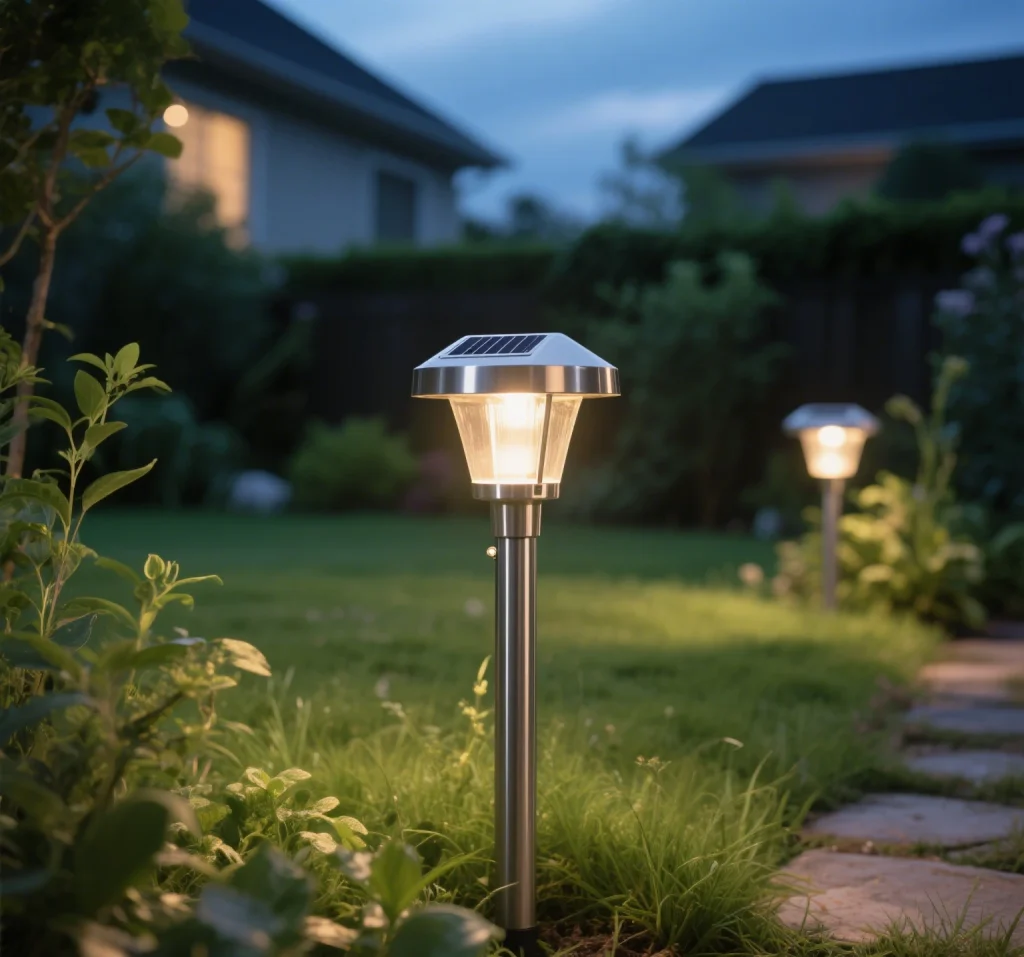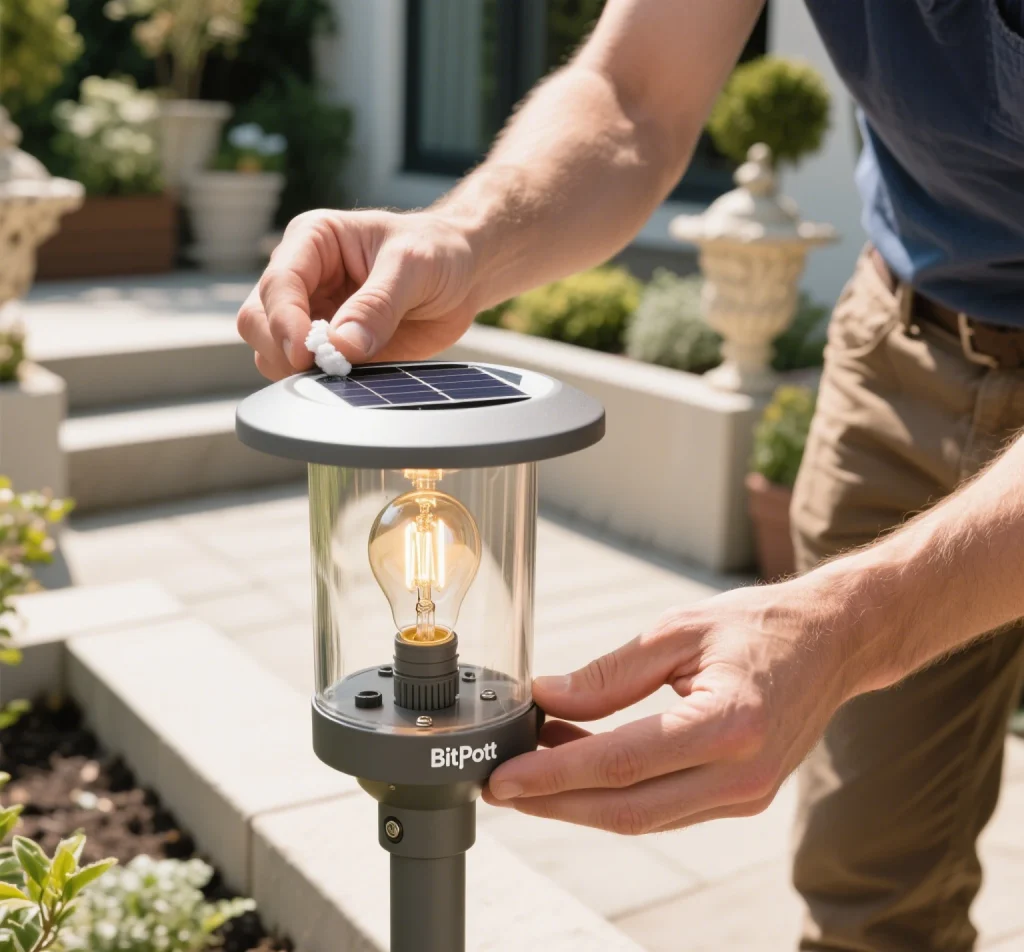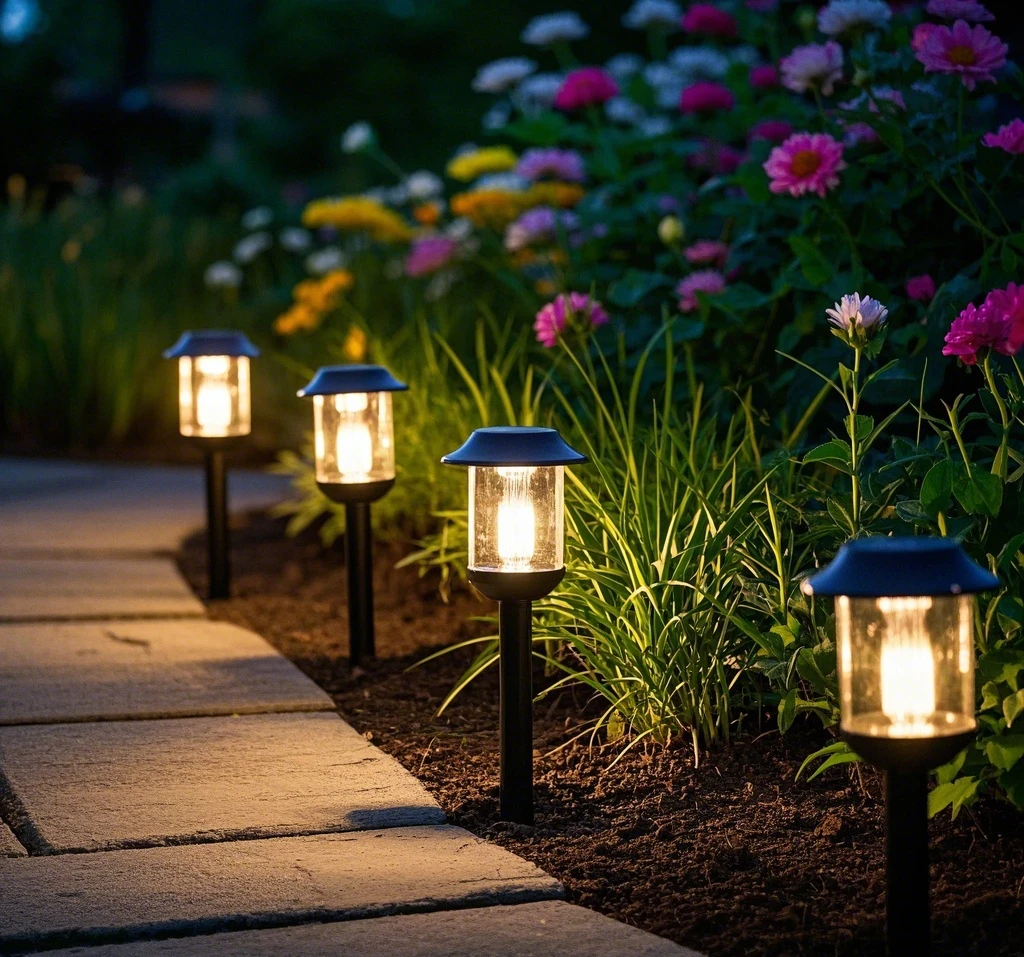As outdoor lighting evolves, motion-sensor solar path lights have become a popular choice for homeowners seeking to enhance safety, aesthetics, and sustainability in their outdoor spaces. Combining renewable energy with smart motion detection, these lights offer an eco-friendly, low-maintenance solution for illuminating walkways, gardens, and driveways. With the global outdoor lighting market projected to grow significantly by 2030, according to Grand View Research, selecting the right motion-sensor solar path lights requires careful consideration of factors like brightness, battery life, weather resistance, and ease of installation. This guide provides a comprehensive overview of these factors, reviews top-rated products for 2025, such as the Outdoor Solar Store’s Modern Solar Pathway Light, and offers practical tips for placement and maintenance to ensure optimal performance.
Understanding Key Factors for Choosing Motion-Sensor Solar Path Lights
When selecting motion-sensor solar path lights, several critical factors determine their effectiveness and suitability for your needs. These include brightness, battery life, weather resistance, and ease of installation, each contributing to the overall functionality and longevity of the lights.

Brightness (Lumens)
Brightness, measured in lumens, is a key consideration for ensuring adequate illumination. For path lighting, a range of 50–250 lumens per light is typically sufficient, balancing visibility with energy efficiency. For example, the Outdoor Solar Store’s Modern Solar Pathway Light delivers 150 lumens, ideal for illuminating walkways without overwhelming glare, as noted in The Spruce’s 2025 reviews. Higher lumens (e.g., 200–250) are better suited for security-focused areas, while lower lumens (50–100) create a warm ambiance for garden paths. Some models, like the Linkind Smart Solar Spotlights, offer adjustable brightness settings, allowing users to customize illumination based on specific needs, such as highlighting a pathway or accentuating landscape features.
Battery Life
Battery life is crucial for consistent performance, especially in regions with limited sunlight. Most solar path lights feature lithium-ion batteries with capacities ranging from 600 mAh to 2200 mAh, providing 6–20 hours of illumination on a full charge. The Beau Jardin Solar Pathway Lights, praised by Bob Vila, offer up to 12 hours of runtime after 6–8 hours of charging, making them reliable for all-night operation. Motion sensors enhance battery efficiency by activating lights only when needed, as seen in the Ring Solar Pathlight, which can handle up to 300 motion events (30 seconds each) per charge, according to The Spruce. For optimal battery life, choose lights with replaceable batteries and high-efficiency solar panels, ensuring longevity even in cloudy conditions.
Weather Resistance
Outdoor lights must withstand diverse weather conditions, from rain and snow to extreme heat. The Ingress Protection (IP) rating indicates a light’s resistance to dust and water. An IP65 rating or higher, as found in the AloftSun Motion Sensor Solar Landscape Spotlights, ensures complete dust protection and resistance to water jets, making them suitable for year-round use. BBC Gardeners’ World emphasizes that IP65-rated lights, like the 4lite Antheia LED Solar Spike Light, perform reliably in harsh conditions, including frost and heavy rain. Materials like stainless steel, aluminum, or high-grade ABS plastic, as used in the Hoselink Solar Path Lights, further enhance durability by resisting corrosion and UV damage.
Ease of Installation
One of the primary advantages of solar path lights is their wire-free installation, which eliminates the need for electrical expertise. Most models, such as the URPOWER Solar Lights, come with ground stakes or mounting hardware, allowing setup in minutes. Better Homes & Gardens notes that the URPOWER lights require only a stake to be inserted into the ground, making them ideal for quick installations along walkways. For versatility, products like the Linkind Smart Solar Spotlights offer both stake and wall-mount options, accommodating various placement needs. Always ensure the solar panel is positioned for maximum sunlight exposure, typically facing south in the Northern Hemisphere, as recommended by PowerBee.

Top-Rated Motion-Sensor Solar Path Lights for 2025
The market for motion-sensor solar path lights is rich with options, but a few stand out for their performance, durability, and smart features. Below are some of the top-rated products for 2025, based on reviews from The Spruce, Bob Vila, and SafeWise.
Outdoor Solar Store Modern Solar Pathway Light
The Modern Solar Pathway Light from Outdoor Solar Store is a top contender, offering 150 lumens of warm white light (3000K) and an IP65 rating for robust weather resistance. Its sleek, minimalist design complements modern landscapes, while the motion sensor activates within a 30-foot range, ensuring energy-efficient operation. With a 1200 mAh lithium-ion battery, it provides up to 10 hours of illumination, making it a reliable choice for pathways and entrances. The Spruce highlights its easy stake-in-ground installation and durable aluminum construction, ideal for long-term use.
Ring Solar Pathlight
For smart home enthusiasts, the Ring Solar Pathlight integrates seamlessly with Alexa and other Ring devices, offering adjustable brightness and motion detection up to 15 feet. Wirecutter praises its sturdy build and app-controlled settings, which allow users to receive motion alerts and sync with security cameras. With a 600 mAh battery, it delivers 6–8 hours of runtime, though it requires the Ring Bridge for Wi-Fi connectivity. Its premium price ($35 per light) is justified by its smart features and durability, as noted in Tom’s Guide.
AloftSun Motion Sensor Solar Landscape Spotlights
The AloftSun Spotlights, featured in Better Homes & Gardens, combine versatility with high performance, offering up to 33 feet of motion detection and an IP67 rating for superior weather resistance. With 30 LED chips and a 2200 mAh battery, they provide 6–12 hours of illumination, adjustable via three lighting modes. Their ability to be staked or wall-mounted makes them suitable for various applications, from pathways to security lighting.
Bitpott Solar Pathway Lights
Known for their aesthetic appeal, the Beau Jardin lights deliver 150 lumens and a decorative diamond pattern, as tested by Bob Vila. With an IP65 rating and rust-resistant steel construction, they withstand diverse weather conditions. Their 1200 mAh battery ensures up to 12 hours of runtime, and the motion sensor enhances energy efficiency, making them a cost-effective choice for decorative path lighting.
Placement Tips for Optimal Performance
Proper placement is critical to maximizing the performance of motion-sensor solar path lights. Consider the following tips:
- Maximize Sunlight Exposure: Position solar panels in areas with at least 6–8 hours of direct sunlight daily, avoiding shade from trees or buildings. PowerBee recommends south-facing placement in the UK for optimal charging.
- Strategic Motion Sensor Placement: Install lights near entrances, driveways, or walkways to ensure motion detection covers high-traffic areas. The AloftSun lights, for example, have a 120-degree detection angle, ideal for broad coverage.
- Height and Angle: Mount lights at 3–4 meters for optimal motion detection range, as suggested by Solar Panels Network USA. Adjust the angle of adjustable panels, like those on the Linkind Spotlights, to direct light precisely where needed.
- Avoid Obstructions: Ensure motion sensors have a clear line of sight, free from vegetation or structures, as advised by Couleenergy. Test sensors during daylight to confirm functionality.
Maintenance Tips for Longevity
To ensure motion-sensor solar path lights remain effective, regular maintenance is essential:
- Clean Solar Panels: Dust, snow, or debris can reduce charging efficiency. Clean panels with a soft, dry cloth every few months, as recommended by The Spruce. Avoid abrasive cleaners to prevent scratching.
- Check Battery Health: Most batteries last 2–4 years, but performance may degrade in extreme weather. Replaceable batteries, like those in the Outdoor Solar Store lights, extend product lifespan. SafeWise suggests checking battery connections after prolonged cloudy periods.
- Inspect for Damage: Periodically check for cracks, corrosion, or loose components, especially after storms. BBC Gardeners’ World notes that IP65-rated lights like the 4lite Antheia are less prone to water ingress but still require occasional inspection.
- Store During Extreme Weather: In regions with heavy snow or hail, consider storing lights indoors to protect delicate components, as advised by Better Homes & Gardens for lights with lower IP ratings.
Challenges and Considerations
While motion-sensor solar path lights offer numerous benefits, there are challenges to consider. Their performance depends on sunlight availability, which can be limited in winter or cloudy regions. Tom’s Guide notes that lights like the Aogist Solar Ground Lights may have reduced runtime in low-light conditions. Additionally, higher-end models with smart features, such as the Ring Solar Pathlight, may require additional accessories (e.g., Ring Bridge), increasing costs. Consumers should also verify compatibility with existing smart home systems, as some lights may not support platforms like Apple HomeKit.
Conclusion
Motion-sensor solar path lights are an ideal solution for illuminating walkways while prioritizing energy efficiency and convenience. By focusing on key factors like brightness (50–250 lumens), battery life (up to 20 hours), weather resistance (IP65 or higher), and ease of installation, homeowners can select products that meet their specific needs. Top-rated options like the Outdoor Solar Store’s Modern Solar Pathway Light, Ring Solar Pathlight, AloftSun Spotlights, and Beau Jardin lights offer a balance of performance, durability, and aesthetics for 2025. Proper placement near entrances and regular maintenance, such as cleaning solar panels and checking batteries, ensure long-term reliability. As solar technology continues to advance, these lights will play a pivotal role in creating safer, smarter, and more sustainable outdoor spaces.

Comments